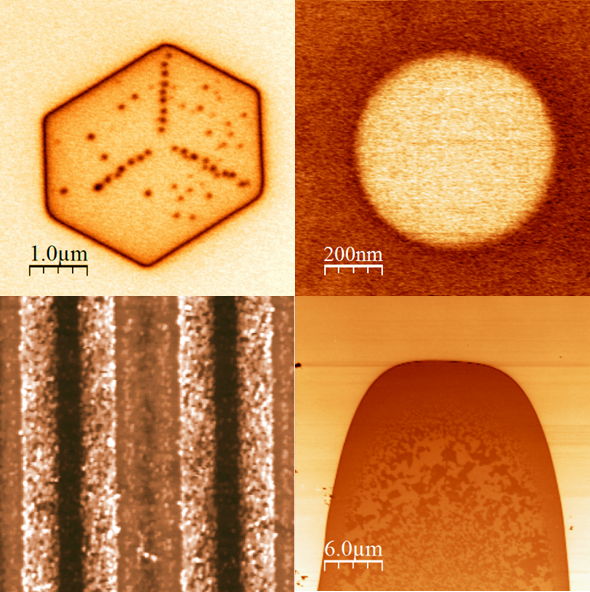Michele Manzo
PhD Thesis Defense
Time: Wed 2015-04-15 10.00 - 13.00
Location: FD5
Subject area: Fysik, Material- och nanofysik
Doctoral student: Michele Manzo, Tillämpad fysik , Kvantelektronik och kvantoptik
Opponent: Professor Marin Alexe, University of Warwick, Dept of Physics, Coventry, England
Supervisor: Universitetslekotr/docent Katia Gallo
Title: Engineering ferroelectric domains and charge transport by proton exchange in lithium niobate
Abstract:
Ferroelectrics are dielectric materials possessing a switchable spontaneous polarization, which have attracted a growing interest for a broad variety of applications such as ferroelectric lithography, artificial photosynthesis, random and dynamic access memories (FeRAMs and DRAM), but also for the fabrication of devices for nonlinear optics, etc. All the aforementioned applications rely on the control of the ferroelectric domains arrangement, or the charge distribution and transport. In this regard, the main prerequisite is the engineering of the spontaneous polarization, obtained by reversing its orientation or locally inhibiting it. In the latter case, the interface created by the spatial discontinuity of the spontaneous polarization generates local charge accumulation, which can be used to extend the capabilities of ferroelectric materials.
This thesis shows how engineering the spontaneous polarization in lithium niobate (LN) by means of proton exchange (PE), a temperature-activated ion exchange process, can be used to develop novel approaches for ferroelectric domain structuring, as well as fabrication of self-assembled nanostructures and control of ionic/electronic transport in this crystal.
In particular, it is shown how the electrostatic charge at PE:LN junctions lying below the crystal surface can effectively counteract lateral domain broadening, which in standard electric field poling hampers the fabrication of ferroelectric gratings for Quasi-Phase Matching with periods shorter than 10 μm. By using such an approach, ferroelectric gratings with periods as small as ~8 μm are fabricated and characterized for efficient nonlinear optical applications. The viability of the approach for the fabrication of denser gratings is also investigated.
The charge distribution at PE:LN junctions lying on the crystal surface is modelled and used to drive the deposition of self-assembled nanowires by means of silver photoreduction. Such a novel approach for PE lithography is characterized for different experimental conditions. The results highlight a marked influence of the orientation of the spontaneous polarization, the deposition times, as well as the reactants concentrations and the doping of the substrate with MgO.
Based on the fact that proton exchange locally reduces the spontaneous polarization, a quick and non-destructive method for imaging PE regions in lithium niobate with nanoscale resolution is also developed by using Piezoresponse Force Microscopy. Moreover the relative reduction of the piezoelectric d33 coefficient associated to PE is estimated in lithium niobate substrates with and without MgO-doping.
Finally, by using advanced Scanning Probe Microscopy techniques, the features of charge transport in PE regions are further investigated with nanoscale resolution. A strong unipolar response is found and interpreted in light of ionic-electronic motion coupling due to the interplay of interstitial protons in the PE regions, nanoscale electrochemical reactions at the tip-surface interface, and rectifying metal-PE junctions.

